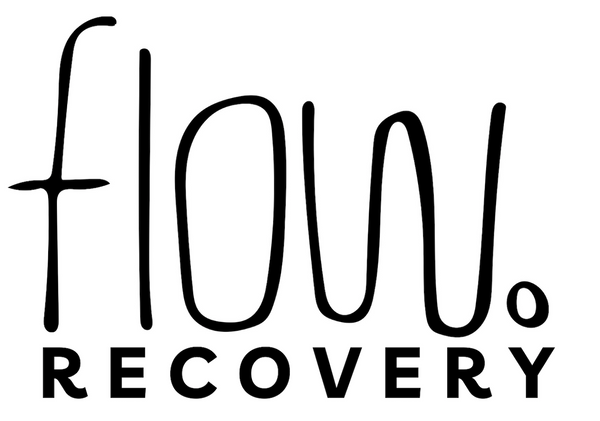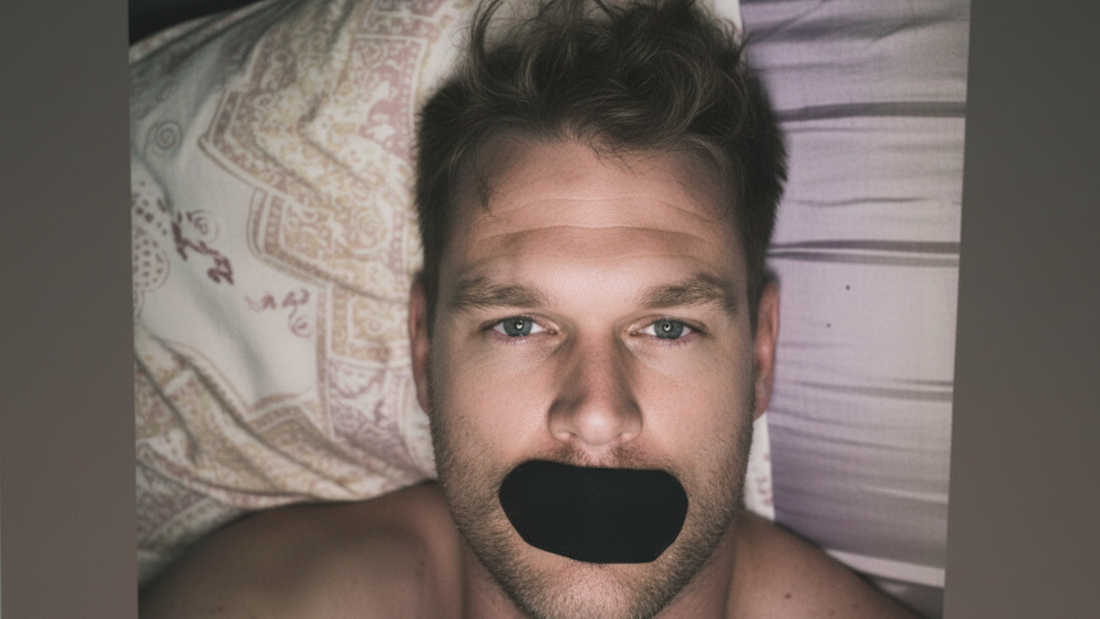Quick Summary
What it is: Mouth taping involves placing a gentle, skin-safe strip over your lips while sleeping to promote nasal breathing.
Why it matters: Nasal breathing filters and humidifies air, boosts oxygen flow, and helps your body produce nitric oxide, improving sleep and recovery.
Health benefits:
- Better, deeper sleep and fewer wake-ups
- Reduced snoring and dry mouth
- Improved oral health and hydration
- Calmer breathing and lower anxiety
- Enhanced oxygen uptake and recovery quality
Latest research says: Early studies show mouth taping may improve sleep efficiency, oxygen levels, and heart rate variability (HRV), but more large-scale research is needed.
Risks to know: Avoid if you have nasal congestion, allergies, or sleep apnea. Always use medical-grade, breathable tape made for sleep.
How to start safely: Begin with a small vertical strip, test for comfort, and use only when nasal breathing feels clear and easy.
Introduction
You’ve probably seen it online, someone sleeping peacefully with a small piece of tape across their lips.
It looks a bit odd, right? But this simple bedtime habit, called mouth taping, is gaining serious attention in the wellness world. From fitness influencers to everyday people trying to sleep better, everyone’s talking about how this small strip of tape might lead to calmer nights, better recovery, and even clearer mornings.
So what’s really going on here? Is mouth taping just another sleep trend, or is there real science behind it? Let’s find out what the research says, what people are actually experiencing, and a few insights most articles don’t tell you.
What Is Mouth Taping, Exactly?
Mouth taping is exactly what it sounds like: placing a gentle, skin-safe piece of tape across your lips before bed to keep your mouth closed while you sleep.
The goal isn’t to stop breathing, it’s to encourage nasal breathing, which is how your body was designed to take in air when you’re at rest.
Nasal breathing helps filter, warm, and humidify the air before it enters your lungs. It also naturally controls your breathing rate and supports oxygen flow.

Many people try mouth taping to reduce snoring, wake up with a less dry mouth, or just feel more rested. It’s also popular among athletes and wellness fans who want to optimize their recovery and oxygen balance.
Why Nasal Breathing Matters
If you’ve ever woken up with a sore throat, dry mouth, or groggy feeling, there’s a good chance you were breathing through your mouth overnight.
That’s not ideal.
When you breathe through your nose instead of your mouth, something amazing happens, your body produces a gas called nitric oxide. This gas helps open up your blood vessels, improves circulation, and even boosts oxygen absorption in your cells.
In other words, nasal breathing helps your body work more efficiently while you sleep.

It also calms your nervous system. Breathing slowly and quietly through your nose signals your body to relax, lowering heart rate and stress hormones. That’s why people who start mouth taping often say they wake up feeling more rested and balanced, not just physically but mentally too.
The Benefits People Notice First
People who’ve tried mouth tapes often report small but powerful changes within a week or two.
Here are some common benefits:
1. Better Sleep Quality
Less tossing and turning, fewer nighttime wake-ups, and a more refreshed feeling in the morning.
2. Reduced Snoring
When your mouth stays closed, your tongue naturally rests in the right position, keeping the airway open and reducing vibrations that cause snoring.
3. Improved Oral Health
No more waking up with dry mouth or bad breath. Nasal breathing keeps the mouth moist and balanced, preventing bacteria buildup.
4. Deeper Breathing and Oxygen Flow
Nasal breathing allows more consistent oxygen exchange, helping your cells recover and recharge while you sleep.
5. Lower Anxiety Levels
Breathing through the nose slows down your rhythm, activating your body’s “rest and digest” mode, making you calmer and less anxious over time.
And here’s something new that often gets overlooked:
Regular mouth taping can help retrain your breathing habits.
Many of us breathe too quickly or too shallowly during the day, especially under stress. Sleeping with your mouth gently taped helps your body remember how to breathe deeply through the nose, even when you’re awake. Over time, this can reduce daytime stress, improve focus, and even support better athletic performance.
The Risks (and How to Avoid Them)
Like any wellness habit, mouth taping isn’t for everyone.
If you have severe nasal congestion, allergies, or a diagnosed sleep disorder like sleep apnea, you should talk to a doctor before trying it.
Mouth taping can also feel strange at first. Some people experience mild anxiety or panic, especially during the first few nights. This usually fades once the body adjusts, but if it doesn’t, it’s okay to stop.
Other possible issues:
- Skin irritation from strong adhesives.
- Discomfort from full-coverage tape.
- Difficulty breathing if your nasal passages are blocked.
The safest way to start is with medical-grade, breathable mouth tape that’s made specifically for sleep. Flow Recovery’s Mouth Tape is a great example, it’s soft, hypoallergenic, and allows partial airflow. That means you can get used to the feeling safely and gradually.
If you’re nervous, start small. Try it for short naps, or use a vertical strip instead of a full seal. You don’t have to go all in from day one.
What the Latest Research Really Says
Researchers and sleep experts agree on one thing, mouth taping shows promise, but it’s still an area being explored. What we know so far points to some encouraging patterns.
People who switch to nasal breathing during sleep often experience less snoring, better oxygen levels, and deeper rest. Early research also suggests that consistent nasal breathing can support healthier heart rhythms and improved recovery by keeping the body in a calmer state overnight.
What’s interesting is how these small changes in breathing can affect your overall wellbeing. When your breathing stays steady through the night, your nervous system remains balanced, helping your body repair more efficiently and your mind wake up clearer.
So, while mouth taping isn’t a miracle solution, it’s becoming clear that this simple habit can have a meaningful impact, especially for those looking to improve their sleep quality, focus, and recovery naturally.
How to Start Mouth Taping Safely
Here’s a simple step-by-step guide if you want to try it:
- Choose the right mouth tape. Use only medical-grade, skin-friendly tape, never regular tape.
- Test for sensitivity. Place a small piece on your hand to check for irritation.
- Start with a small strip. Try a vertical piece that leaves room on the sides of your lips.
- Clear your nose. Make sure you can breathe easily before taping.
- Ease into it. Try for short naps first.
- Observe your sleep. Notice if you wake up feeling more alert or hydrated.
- Stop if uncomfortable. If you feel anxious or short of breath, remove it immediately.
Conclusion: Small Tape, Big Impact
Mouth taping may look simple, but its impact can reach every corner of your wellbeing, from how you breathe to how deeply you rest.
It’s not a cure-all, and it’s not for everyone, but for many, it’s a quiet game-changer.
If you’re curious, start small, listen to your body, and use a gentle, high-quality tape made for the job.
Flow Recovery’s Mouth Tape is designed for safe, comfortable use, helping you breathe better, sleep deeper, and wake up feeling your best.
Because sometimes, better recovery starts with one small strip of tape, and one good night’s sleep.
Frequently Asked Questions
-
What exactly is mouth taping?
Mouth taping involves placing a gentle, skin-safe strip of tape across your lips before sleep. It encourages nasal breathing instead of mouth breathing, which can help improve sleep quality, reduce snoring, and support recovery.
-
Is mouth taping safe to try at home?
Yes, for most healthy people, mouth taping is safe when done correctly with medical-grade, breathable tape. However, people with nasal congestion, sleep apnea, or severe allergies should speak to a doctor first. Flow Recovery’s Mouth Tape is specially designed to make this practice comfortable and safe for beginners.
-
What are the main benefits of mouth taping?
People who try mouth taping often report deeper sleep, less snoring, fewer dry-mouth mornings, and improved energy levels. Over time, it can help train your body to breathe calmly and efficiently through the nose, which also supports better recovery.
-
Can mouth taping really stop snoring?
It can help reduce snoring for many people, especially those who snore because they breathe through their mouths at night. However, it may not work for everyone, especially if snoring is caused by blocked nasal passages or sleep apnea.
-
What does science say about mouth taping?
Early studies show that promoting nasal breathing during sleep can reduce snoring, improve oxygen flow, and support better sleep quality. While researchers agree that more evidence is needed, the current findings are positive.
-
How do I start mouth taping safely?
Start by using a small, vertical strip in the center of your lips, leaving space on the sides. Make sure your nose is clear and you can breathe comfortably before sleeping. Use soft, hypoallergenic tape like Flow Recovery’s Mouth Tape to prevent irritation and make the experience more comfortable.
-
Can I use regular tape for mouth taping?
No. Never use duct tape, medical tape, or any adhesive not designed for the face. These can cause irritation or block airflow. Always use a tape made specifically for sleep and breathing practices.
-
What if I feel anxious or can’t sleep with my mouth taped?
That’s totally normal at first. Some people feel a little uneasy until they get used to it. Try taping for short naps or for a few minutes before bed to adjust gradually. Flow Recovery’s breathable tape design helps reduce that “sealed” feeling and makes the habit easier to build.
-
How long does it take to notice results?
Many people start noticing changes, like waking up more refreshed or with less snoring, within a week or two. For deeper breathing improvements, consistency matters. Make it part of your nightly routine for at least 2–3 weeks.
-
Can I combine mouth taping with nasal strips or other recovery tools?
Absolutely. In fact, using nasal strips to open your airways can make mouth taping even more effective. Many Flow Recovery users combine mouth tape with nasal strips, cold therapy, or breathing exercises for a complete recovery routine.


